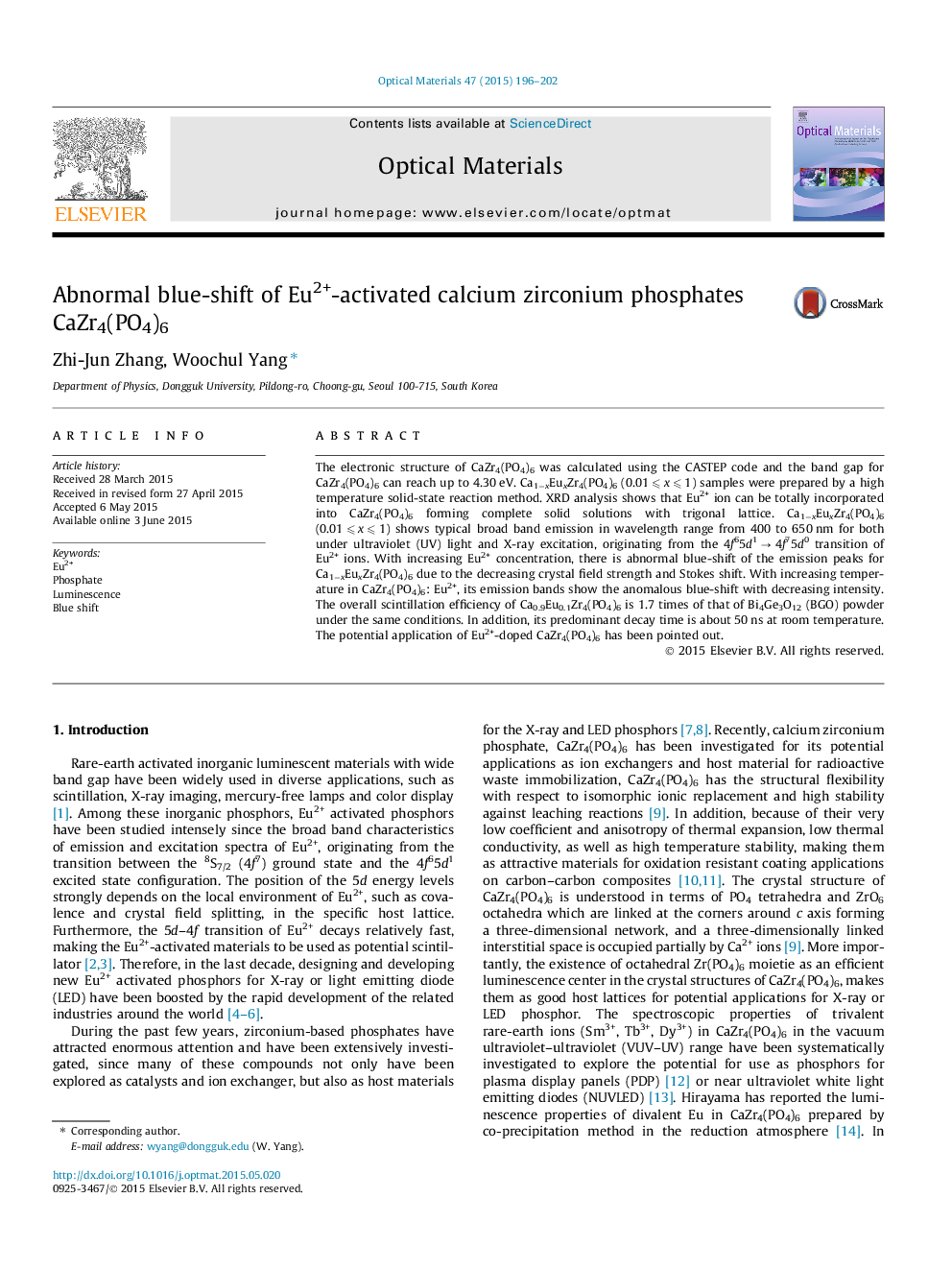| Article ID | Journal | Published Year | Pages | File Type |
|---|---|---|---|---|
| 1493701 | Optical Materials | 2015 | 7 Pages |
•Eu2+ can be totally incorporated into CaZr4(PO4)6 forming complete solid solutions.•There is an abnormal blue-shift for Eu2+ in CaZr4(PO4)6 with increasing Eu2+ concentration or temperature.•Ca0.9Eu0.1Zr4(PO4)6 shows high overall scintillation efficiency (1.7 times of BGO) and fast decay time.
The electronic structure of CaZr4(PO4)6 was calculated using the CASTEP code and the band gap for CaZr4(PO4)6 can reach up to 4.30 eV. Ca1−xEuxZr4(PO4)6 (0.01 ⩽ x ⩽ 1) samples were prepared by a high temperature solid-state reaction method. XRD analysis shows that Eu2+ ion can be totally incorporated into CaZr4(PO4)6 forming complete solid solutions with trigonal lattice. Ca1−xEuxZr4(PO4)6 (0.01 ⩽ x ⩽ 1) shows typical broad band emission in wavelength range from 400 to 650 nm for both under ultraviolet (UV) light and X-ray excitation, originating from the 4f65d1 → 4f75d0 transition of Eu2+ ions. With increasing Eu2+ concentration, there is abnormal blue-shift of the emission peaks for Ca1−xEuxZr4(PO4)6 due to the decreasing crystal field strength and Stokes shift. With increasing temperature in CaZr4(PO4)6: Eu2+, its emission bands show the anomalous blue-shift with decreasing intensity. The overall scintillation efficiency of Ca0.9Eu0.1Zr4(PO4)6 is 1.7 times of that of Bi4Ge3O12 (BGO) powder under the same conditions. In addition, its predominant decay time is about 50 ns at room temperature. The potential application of Eu2+-doped CaZr4(PO4)6 has been pointed out.
Graphical abstractEmission spectra of Ca1−xEuxZr4(PO4)6 (0.01 ⩽ x ⩽ 1) samples as a function of Eu2+ concentration under 300 nm excitation. The inset shows the excitation spectra and the representative photograph of Ca1−xEuxZr4(PO4)6 (0.01 ⩽ x ⩽ 1) for excitation with a 365 nm Hg lamp.Figure optionsDownload full-size imageDownload high-quality image (175 K)Download as PowerPoint slide
